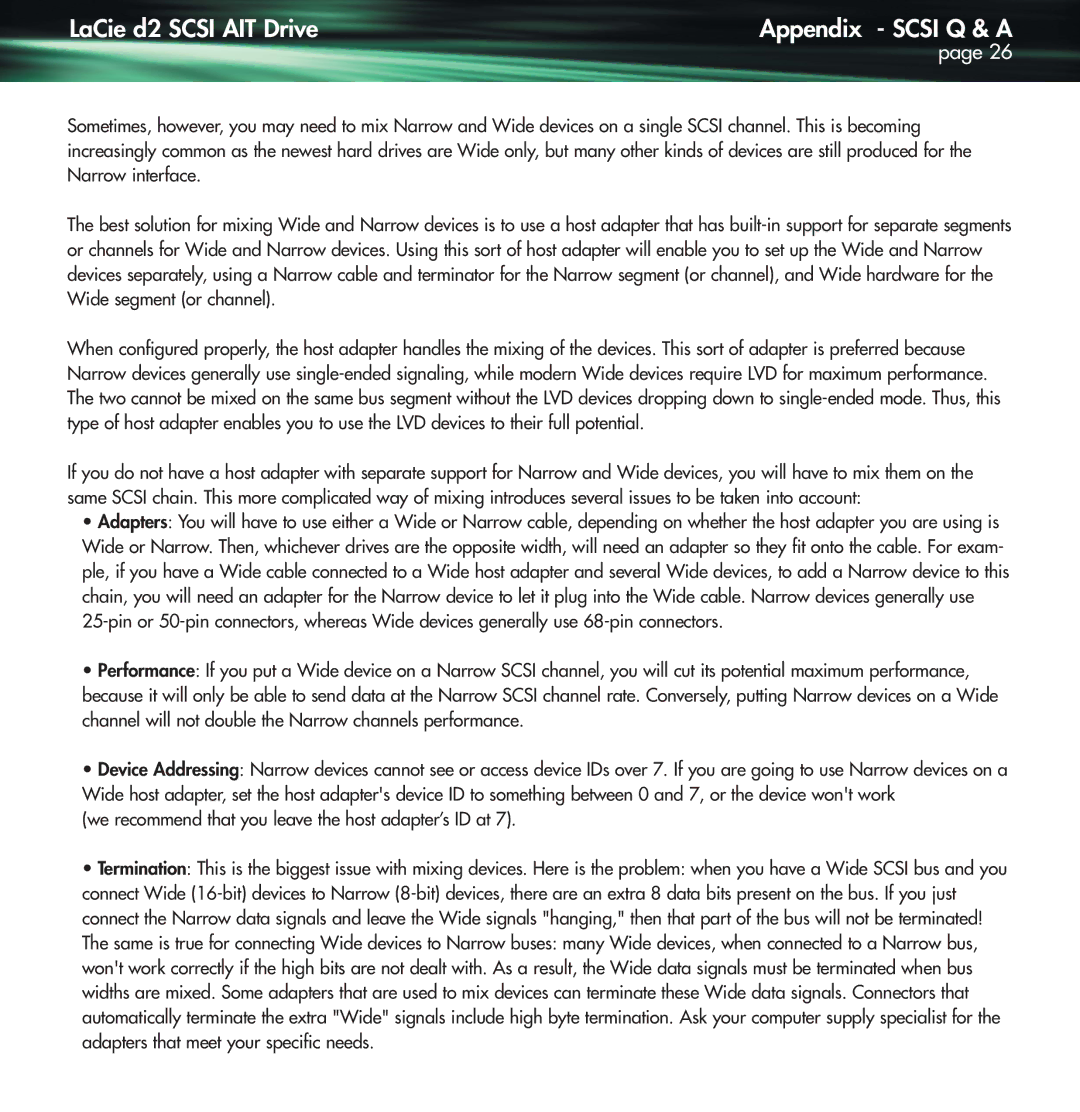
LaCie d2 SCSI AIT Drive | Appendix - SCSI Q & A |
| page 26 |
Sometimes, however, you may need to mix Narrow and Wide devices on a single SCSI channel. This is becoming increasingly common as the newest hard drives are Wide only, but many other kinds of devices are still produced for the Narrow interface.
The best solution for mixing Wide and Narrow devices is to use a host adapter that has
When configured properly, the host adapter handles the mixing of the devices. This sort of adapter is preferred because Narrow devices generally use
If you do not have a host adapter with separate support for Narrow and Wide devices, you will have to mix them on the same SCSI chain. This more complicated way of mixing introduces several issues to be taken into account:
•Adapters: You will have to use either a Wide or Narrow cable, depending on whether the host adapter you are using is Wide or Narrow. Then, whichever drives are the opposite width, will need an adapter so they fit onto the cable. For exam- ple, if you have a Wide cable connected to a Wide host adapter and several Wide devices, to add a Narrow device to this chain, you will need an adapter for the Narrow device to let it plug into the Wide cable. Narrow devices generally use
•Performance: If you put a Wide device on a Narrow SCSI channel, you will cut its potential maximum performance, because it will only be able to send data at the Narrow SCSI channel rate. Conversely, putting Narrow devices on a Wide channel will not double the Narrow channels performance.
•Device Addressing: Narrow devices cannot see or access device IDs over 7. If you are going to use Narrow devices on a Wide host adapter, set the host adapter's device ID to something between 0 and 7, or the device won't work
(we recommend that you leave the host adapter’s ID at 7).
•Termination: This is the biggest issue with mixing devices. Here is the problem: when you have a Wide SCSI bus and you connect Wide
